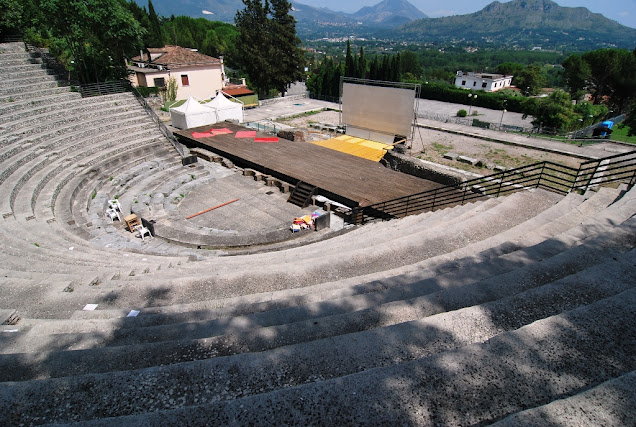Amphitheater of Casinum

The amphitheater of Casinum, erected by Ummidia Quadratilla (whose passion for actors is mentioned by Pliny, Epist. vii.24, on the occasion of her death, and quoted in my post about the theater of Casinum, still exists. She was a wealthy Roman aristocrate and a member of the gens Ummidia. She died in the reign of Emperor Trajan (98-117) within a little of eighty years of age, leaving two-thirds (ex besse) of her fortune to her grandson and the other third to her granddaughter. Her grandson Ummidius Quadratus was an intimate friend of Roman Senator and historian Pliny the Younger, who praises her for fostering Quadratus' studies while keeping him untouched by her own luxurious lifestyle. Quadratilla was probably a sister of Gaius Ummidius Durmius Quadratus, the governor of Syria, who died in 60, and appears to be the same as the Quadratilla mentioned in the following inscription, discovered at Casinum in Lazio: "Ummidia CF Quadratilla amphiheatrum et templum Casinatibus sua pe...


